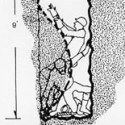Aluminum Record posted:I feel like whatever I choose now is gonna define my career path (as one guy put it, I've gotta choose which side of the decimal point I want to be on). If I choose the circuit design job it'll be much harder for me to move to power in the future, and vice versa. I'm at a sort of crossroads and don't know which way to go. Basically the only things that sort of lock you into/out of certain fields are either getting a PhD in some field, or working continuously for several years in a certain industry. Go ask any professional engineers in any industry what their first internship was. I bet that for a large majority it was in a completely different field than what they ended up in.
|
|
|
|
|

|
| # ? Jun 3, 2024 21:04 |
|
Aluminum Record posted:Gonna crosspost this from the "Tell me about engineering" thread since I know there are a lot of EE's in here... Relax - you're just picking an internship that lasts for 3 months. As others have said, there is no way that will define your career path. One of my best friends from college got his masters in VLSI/Processor design and now works as a consultant setting up power distribution in data centers. A guy I work with started off as a chemical engineer, did that for about 15 years, and then decided to switch to analog electronics (and now has about 15 years of doing that). Do what you think would be the most interesting - I'd probably go with the power job since, as an intern, you would probably be doing bitch engineering work at an IC house. Especially if it involves DRAM.
|
|
|
|
riichiee posted:I'm trying to order some male to female single pin connectors. Does this thing have a wire on one end or is it just a socket and pin?
|
|
|
|
Basically these: http://www.embeddedmarket.com/products/Single-Pin-Connector-for-interfacing/?&cur=USD But with one male end (not essential, I could just cut the wire) and from an australian source.
|
|
|
|
I thought they were called flywires, but I got results for "female jumper wire site:au" How about : http://www.australianrobotics.com.au/?q=node/213
|
|
|
|
Farnell seems to have a few, but unfortunately no pin-to-socket types. You could make them yourself with Hirose DF-series crimp contacts. I don't know what the pin dimensions you're looking for are, but they ought to make the right size.
|
|
|
|
taqueso posted:I thought they were called flywires, but I got results for "female jumper wire site:au" Cheers, perfect. Thanks for your help guys.
|
|
|
|
Aluminum Record posted:I also had something of an interest in working in a nuclear power plant, so the XCel job would help a lot in moving in that direction. I do a bit of electronics repair as part of my job at a nuclear power plant. I hope you like old electronics and obsolete op-amps. Pay is really good though.
|
|
|
|
riichiee posted:Basically these: http://www.embeddedmarket.com/products/Single-Pin-Connector-for-interfacing/?&cur=USD I usually make these myself. You can find the little crimp ends, and crimp them with a pair of pliers, then put a dab of solder on and heat shrink it. You can do the same with male header pins, except no crimping. Just wrap the stripped copper around the end of the pin and solder then heat shrink.
|
|
|
|
Let me know if this is not the thread for this but I think this is the closest match. Haven't been a close follower of this thread. I desire to construct a device that provides a beam-type security for the front perimeter of my property to integrate with my security and lighting control system. There are devices that do this already but I've found two problems with them. 1) The kind that can go long ranges (span is roughly 100ft) require a powered unit on both sides; inconvenient to run electrical wire to two locations out in my lawn. Also tend to cost between $100 and $400 2) The kind that only use a reflector on the other side can only go about 30 to 40ft. Just not long enough. Cheaper than dual module models but still probably less than I could build something for. Would it not be possible to build a device that uses a cheap laser pointer, a mirror and a photocell? When under a hood I'm theorizing that the photocell should be able to tell the difference between ambient sunlight and being hit in the eye with a laser. From there it'd just be a matter of controlling a low rated relay to speak to my security system..or perhaps even just letting it read the photocell directly (it can read dc analog voltages pretty reliably as its a really programmable system). I'm aware that a rain storm could set off this sensor..but my current system of several PIRs on the front edge of the home goes off for all kinds of crud, including constantly in the rain, so I'm fairly sure this would be a bit more stable than PIRs wide open outside. Assuming there isn't anything huge I'm missing here, I'm mainly curious about proper parts. I can't seem to find low powered lasers that are made to be wired constant-on. Is this just something you hack? Is there an overheat/burnout issue with running a cheap laser 24/7? What about any photocells you may recommend? Thanks in advance. Edit: Specific recommended sources for parts would be appreciated. Searching amazon for photocell and related keywords just gets stuff meant to turn outdoor lights on and off. Edit2: Thanks to the OP I have begun finding some photocells more along appropriate lines. My question now is that I know little about how much light a cheap laser puts out in relation to the limits these things have in their sensitivity. I obviously don't need much sensitivity..just enough to differentiate indirect ambient sunlight from the laser. My search: http://www.jameco.com/webapp/wcs/st...eText=photocell chedemefedeme fucked around with this message at 05:33 on Mar 24, 2011 |
|
|
|
Couple of quick questions about DIY pcb manufacture. I'd like to start etching my own boards, hopefully double-sided SMD designs with either 0805 or 0603 minimum part footprints. I can't seem to find a comparison of various methods. I can handle building UV exposure boxes or bubble tanks but it's the chemical processes I'm worried about. I'm concerned about the environmental effects - I realise all methods will leave me with some copper sludge to dispose of but surely some are safer and less toxic than others? Is there a run-down anywhere of the various options with advantages/disadvantages?
|
|
|
|
chedemefedeme posted:I desire to construct a device that provides a beam-type security for the front perimeter of my property to integrate with my security and lighting control system. There are devices that do this already but I've found two problems with them. 100ft is much too far for a cheap laser pointer. They have pretty rudimentary optics, and usually project a beam that has a good amount of angular spread (there's a better term for it, but i can't remember it. But, basically, if you want it to reflect (likely from a cheap mirror), you'll need a better laser, and possibly a better enclosure. But even with laboratory optics and a lab laser, the alignment is an utter bitch. You need good mountings for both the laser and the mirror, and that aint easy. Furthermore, cheap lasers are probably designed for only intermittent use. So, no idea how it would fare being left continuously. Lastly, you'll need to enclose the mirror and the receiver to limit sunlight and reflections. And please don't use a photocell--they are ok for general light detection, but little else. They have a really slow response rate, and are generally crap. A photodiode/phototransistor would be much more suitable, especially since they can have a narrower wavelength response curve.
|
|
|
|
the wizards beard posted:Couple of quick questions about DIY pcb manufacture. I'd like to start etching my own boards, hopefully double-sided SMD designs with either 0805 or 0603 minimum part footprints. I never actually did UV exposure, I went the toner transfer route. It worked fabulously, and doing two-sided boards wasn't a problem (the first board I made was two sided, and had hilariously fined pitched devices. Unlike UV exposure, it doesn't give benefits for remaking the same board; However, I just use a bigger pcb, and make multiple copies of my board at once if need be, then cut the PCBs apart. You can neutralize old etchant, and precipitate out the copper, i believe (although I can't recall how). Also, this link might be of interest (despite the fact that it was done by someone who really, really doesn't know chemistry) EDIT: WHOOPS! http://hackaday.com/2011/03/03/simple-pcb-etchant-made-from-chemicals-you-can-put-in-your-mouth/ Slanderer fucked around with this message at 01:43 on Mar 25, 2011 |
|
|
|
Slanderer posted:I never actually did UV exposure, I went the toner transfer route. It worked fabulously, and doing two-sided boards wasn't a problem (the first board I made was two sided, and had hilariously fined pitched devices. Unlike UV exposure, it doesn't give benefits for remaking the same board; However, I just use a bigger pcb, and make multiple copies of my board at once if need be, then cut the PCBs apart. what link
|
|
|
|
ante posted:what link fixed
|
|
|
|
Slanderer posted:100ft is much too far for a cheap laser pointer. They have pretty rudimentary optics, and usually project a beam that has a good amount of angular spread (there's a better term for it, but i can't remember it. But, basically, if you want it to reflect (likely from a cheap mirror), you'll need a better laser, and possibly a better enclosure. Perhaps I can't go dollar store cheap. $20 eBay/amazon green laser maybe? I really am curious if someone has knowledge of green vs red when it comes to cheaper continuous operation. And yeah, I really meant photoresistor when I kept saying photocell. A photoresistor should integrate right into my elk panel with virtually nothing else needed. I'm totally open to other ideas for getting this task done. I want an affordable way to notify my automation panel when someone has crossed my front property line but only want to have to run power/sensor lines to one corner.
|
|
|
|
chedemefedeme posted:Perhaps I can't go dollar store cheap. $20 eBay/amazon green laser maybe? I really am curious if someone has knowledge of green vs red when it comes to cheaper continuous operation. Build a moat
|
|
|
the wizards beard posted:I can't seem to find a comparison of various methods. I can handle building UV exposure boxes or bubble tanks but it's the chemical processes I'm worried about. I'm concerned about the environmental effects - I realise all methods will leave me with some copper sludge to dispose of but surely some are safer and less toxic than others? Is there a run-down anywhere of the various options with advantages/disadvantages? I use a UV exposure method, and it pretty much owns. I can generally go through the whole process and end up with a 2 layer board in a half an hour or less. Besides etchant, we use diluted NaOH to strip exposed photoresist, and either acetone or methanol to strip remaining photoresist. Neither of these are particularly hard to dispose of, and you don't need much. Just have glass pan of NaOH and a squirt bottle of solvent sitting around and we have to replace/refill them maybe ever fifty uses. The etchant is replaced about every six months. Doing it is about a day's work (mostly cleaning out all the copper sludge).
|
|
|
|
|
ANIME AKBAR posted:Pretty much all methods are going to use an etchant like ferric chloride, which is generally the nastiest thing you'll have to deal with. So you're stuck with that no matter what. It's still better to precipitate out the copper of possible, but I can't for the life of me remember the chemistry to do so. The copper is rather bad to put down the drain...
|
|
|
|
ANIME AKBAR posted:Pretty much all methods are going to use an etchant like ferric chloride, which is generally the nastiest thing you'll have to deal with. So you're stuck with that no matter what. All of the etching discussions on the internet are by idiot hobbyists. It's pretty difficult to separate the wheat from the chaff. Could you summerize the differences/pros/cons between the common methods? Here's what I know: The toner transfer method involves using a laser printer to print traces onto some magazine paper (or something else that the ink doesn't stick well to), then you stick it on a copper-clad board and use a clothes iron to transfer the ink. Then you stick it in a chemical bath that eats away the copper, leaving the stuff underneath the ink mostly untouched. I'm under the impression that the only was that the UV exposure method differs is that you use a bunch of lamps instead of a clothes iron. I don't know how accurate that is, or what the advantages are.
|
|
|
|
Sir Xiphos posted:For those of you that have used Altium Designer before, is there any way that I can simulate the ammount of light hitting a photodiode so I can sort my useless circuit out? That's all I need. IMHO, Altium is decent (not good) at two things and two things only: schematic capture and PCB layout. Hate their FPGA tools, and it's not intended for circuit simulation like something from Mentor or Cadence (or even a SPICE-derivative) would be. e: poo poo I missed a page Also, we don't have enough interest/community for a FPGA thread do we? They're popping up more and more often in consumer stuff now, thought it might be nice to explain to non-EE/CE goons what they're doing in their femtocells and stuff. e2: don't put copper down the drain
|
|
|
|
ante posted:All of the etching discussions on the internet are by idiot hobbyists. It's pretty difficult to separate the wheat from the chaff. Could you summerize the differences/pros/cons between the common methods? With toner transfer, you print your board layout onto photo paper/magazine paper/whatever, iron it onto the board, and the toner on the copper clad PCB masks the pads and traces. With UV, you print a mask onto transparencies or something, align it with the board, and expose it. However, the UV exposure doesn't use plain copper clad, it uses stuff coated with either a positive or negative UV photoresist. So, in that regard, the raw materials for UV exposure are more expensive, furthermore, they require you to build an exposure box. Toner transfer obviously requires that you have a laser printer around... Toner transfer is generally quicker, as you don't have to wait for the board to be exposed. But I think it has a bit higher failure rate than UV exposure, because bits of toner can fail to transfer, or a thin film of the paper might not be fully removed before etching. However, if you examine the board before etching you can spot any defects, and its a simple matter to wipe it with alcohol, buff it with steel wool, and transfer again. Like I said, UV exposure is more reliable, and also once you make the photomasks, you can reuse them over and over without incident, allowing you to expose a lot of boards as easily as for one or two, as long as you have an efficient setup (standardized masks & PCB sizes, for one). In theory, the maximum resolution of each type is different. Toner transfer depends on the resolution of the laser printer, and UV exposure depends on the resolution of the laser or inkjet you use. However, even with absurdly small traces and IC pitches, I haven't had any issues.
|
|
|
|
I have a +/-12V system, and I want to run an IC in it at +/-7.5V. Is the usage of Zener diodes at the power supply pins of the IC an acceptable practice to get the proper supply voltage for the IC? I'm learning this stuff as I go.
|
|
|
|
chedemefedeme posted:Perhaps I can't go dollar store cheap. $20 eBay/amazon green laser maybe? I really am curious if someone has knowledge of green vs red when it comes to cheaper continuous operation. You could also try using a retroreflector on the one side. You could actually do all sorts of fancy stuff to limit outside interference.
|
|
|
|
ryanmfw posted:You could also try using a retroreflector on the one side. You could actually do all sorts of fancy stuff to limit outside interference. I don't know much about this but I'm all ears.
|
|
|
|
This is probably a dumb question but I'm planning on trying to generate some sine waves and feed them into the line in of an store bought speaker/amplifier system. I'm planning on doing thus with an R2R resistor ladder connected to 4 or 5 ports on my microcontroller but the top voltage level for this will be the reference voltage of the microcontroller won't it? This will be 5V for me but looking at the nominal levels for consumer audio equipment I need to get this down to about 0.5v. So, long story short, I want to get the voltage down from 5v (peak) to below 0.5v. Is the only way to do this by putting a resistor in series with the line out feed of my system? I'm a bit worried about doing this as it'll be quite a big voltage drop so won't I be losing a fair bit of power just dropping the voltage?
|
|
|
|
I'm not an EE but I've got audio systems experience. We usually use tapping (adjustable) transformers to lower voltage of audio lines without the loss of using resistors, but this is usually for situations where we've stepped up the signal to a higher level for transmission. Example: Out of the amplifier we use a transformer to step up to 70v. On the back of each speaker is a transformer to step down to a lower voltage acceptable for playback. This is because you're less susceptible to signal loss due to line resistance at higher voltages. We use resistors for audio in the case of some volume knobs, which add resistance as they turn (look up Potentiometer) thus lowering the volume. But in your situation it simply sounds like you're generating the signal with too much voltage in the first place. If so you should be able to lower it with a transformer, but since I've never done what you're describing dont take my word 100% for it. Last second edit: If you're trying to get down to 0.5v it sounds like you're going for "line level" input, not interfacing directly to a speaker. In that case..I'm really out of my element and am somewhat curious what others will say. I've never designed anything to generate a "line level" audio signal.
|
|
|
|
Why wouldn't you just buffer it with 1/10th (or 1/5th) gain through a coupling capacitor?
|
|
|
|
therunningman posted:I have a +/-12V system, and I want to run an IC in it at +/-7.5V. I'm not an expert but from what I've read people don't recommend using a zener diode to do that. I just ended up getting a voltage regulator. Say something like this http://uk.farnell.com/on-semiconductor/ncp3334dadjg/ic-voltage-regulator/dp/1703368
|
|
|
|
i mean, Zener regulation is an extremely low part count way of regulating. If the current the IC is drawing is low enough, it might be possible, but be sure to use a current limiting resistor too. Technically, this is a crappy shunt regulator circuit. Not too stable of efficient, sure, but it is what it is.
|
|
|
|
therunningman posted:I have a +/-12V system, and I want to run an IC in it at +/-7.5V. Are you going to draw a lot of current? If it's an opamp or similar you could use 78 and 79 series regulators, they are available for 8V, 100mA to 1A, the 78 series regulates positive and the 79 negative voltages. Part numbers LM7808 and LM7908.
|
|
|
|
longview posted:Are you going to draw a lot of current? If it's an opamp or similar you could use 78 and 79 series regulators, they are available for 8V, 100mA to 1A, the 78 series regulates positive and the 79 negative voltages. The circuit won't draw much current. Only thing that would be running off of it is a CD4053 IC. The best way would naturally be to use voltage regulators, I was hoping for an easy way. (I have the Zener's handy)
|
|
|
|
Boy, you guys ought'a have seen what we were doing - 200kVA UPS system, some really serious silicon. (IGBT rectifier/inverter). This thread's cute with all your little milliamps... Three-Phase fucked around with this message at 14:52 on Mar 27, 2011 |
|
|
|
Hey ElectroGoons, I've been working on an idea for a project and I need to know how to pull it off. I know nothing about electronics, but would like to learn enough in order to build this project. (or see if something like it exists already.) Basically, it's what I call an "Electronic Pinwheel," based on an old paintball game we used to play. The basic idea is that there are pinwheels with four team colours on them scattered around the field. Whichever team's colour is up at a given interval (eg. every half hour.) that team gets a point. It ends up being similar to a conquest-like game culminating in large battles to take over points just before the intervals are up. Anyway, I thought that this game could be more interesting/easier to manage if I created electronic systems which could keep track of the points. The simplest set up would be something like a control box with five buttons (one of each team as wel as a pause/stop,) and coloured indicators (lights?) to show which team currently holds the point. (also a power source...of course) Idea #1: My original plan was to hook up the buttons to simple counters which would count up when a team's button has been pushed, and would stop when another team's button is pushed, therefore starting the other team's counter. I figured this was pretty simple, and would get the job done. Idea #2: This idea involves having counters which will only gain a point based on which team has the point at certain time intervals. This mode would be similar to the original pinwheel game, but would require some sort of visible countdown to show people at what time the point will be awarded. Idea #3: In this setup, more points would be awarded based on how long you hold a point. For example, if one team presses their button, for the first 5 minutes they're receiving 1 point per minute, and the amount would rise until a given maximum (10 per minute after 30minutes let's say.) Now, that's what I had in mind. I have no idea where to start. If someone could help me come up with some basic schematics, parts lists, or even just point me in the right direction, that would be great.
|
|
|
Three-Phase posted:Boy, you guys ought'a have seen what we were doing - 200kVA UPS system, some really serious silicon. (IGBT rectifier/inverter). In the next month we're going to be finishing off a couple interleaved 25KW PFCs. I don't think I ever want to work at a higher power level. It becomes more of a mechanical problem (heatsink design/laminated bus machining/cabling harnesses) than an electrical problem (more silicon/ferrite/copper). It just takes all the fun out of it. We're using these modules and are pushing them to around 20KHz. ANIME AKBAR fucked around with this message at 17:53 on Mar 27, 2011 |
|
|
|
|
Skinny Bins posted:Hey ElectroGoons, Skinny, instead of using discrete counters, have you considered buying a microprocessor like the PicAxe microcontroller or a Basic Stamp and doing the counting and stuff in software? Having a single device handle the input, output, and logic would probably be the simplest solution. Are you familiar with Basic or C programming? If so, with a little studying you could probably program one of these. If you wanted to do more fancy stuff, you might need a multiplexer chip or some other add-ons. ANIME AKBAR posted:In the next month we're going to be finishing off a couple interleaved 25KW PFCs. I don't think I ever want to work at a higher power level. It becomes more of a mechanical problem (heatsink design/laminated bus machining/cabling harnesses) than an electrical problem (more silicon/ferrite/copper). It just takes all the fun out of it. I remember getting SCR modules from that same company, I think they were around 3000A. As far as bigger stuff goes - ABB Megadrive. Up to around 100,000HP at medium voltage, higher on request. Water-cooled for larger systems. They have a Megadrive at one of the NASA facilities that's a 135,000 HP synchronous motor. I've seen ABB's "smaller" drives that are in the 15,000-HP area at 13kVAC. Three-Phase fucked around with this message at 23:40 on Mar 27, 2011 |
|
|
|
See, the only thing I could see worthwhile about those kind of power levels would be if you started using old school rectifiers, like ignitrons and thyratrons and other cool poo poo.
|
|
|
|
|
ANIME AKBAR posted:See, the only thing I could see worthwhile about those kind of power levels would be if you started using old school rectifiers, like ignitrons and thyratrons and other cool poo poo. An arc rectifier the size of a schoolbus. Probably would look like something out of a video game you'd have to blow up at the end to win.
|
|
|
|
I am playing with a very simple comparator circuit and I can't figure out why the TL084 op-amp I am using swings between -2.8 and +6 when it is supplied +/-12V The input (+) is a pushbutton feeding a variable voltage from a 10K pot. The reference (-) is 0-12V, set with a 10K pot. The output is connected to an LED through a 1K resistor. What am I missing (probably lots)?
|
|
|
|

|
| # ? Jun 3, 2024 21:04 |
|
What's the cheapest option for passing signals into a PC? When I google "analog inputs for PC" I just find really really expensive cards... Are there any cheaper options that are standard or anything?
|
|
|



























